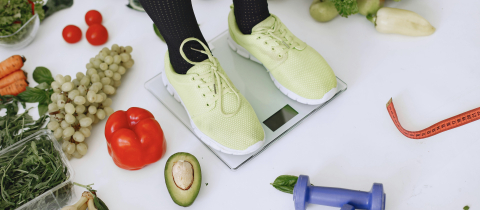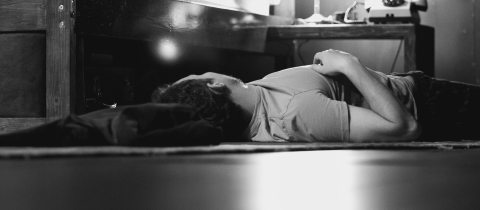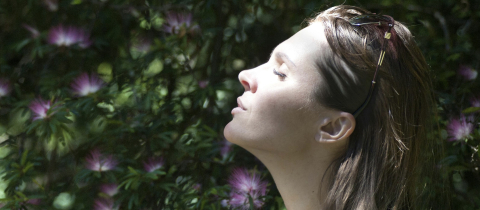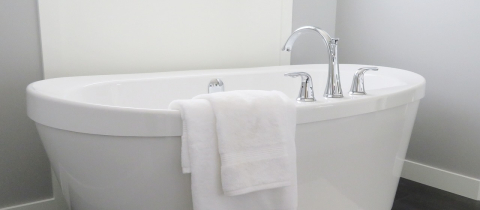If I asked you to name the most common chronic disease in children, what would you say? Asthma comes top of mind, but there is something five times more common in kids: cavities.
We don’t typically think of dental cavities as a chronic disease—in part because of the separation between medicine and dentistry—but it is. And it doesn’t just affect children: most adults in industrialized countries, where sugary food is commonly available, have to deal with this disease process.
I write the word “cavity,” but the phrase “dental caries” is actually more encompassing. First documented in 1634 and coming from the Latin meaning “to decay,” caries refers to the process that can eventually lead to a hole in a tooth, an actual cavity.
Few people enjoy going to the dentist and being told to reduce their sugar consumption. So, what if there was a pain-free way of avoiding dental caries forever? There is a product you can buy right now that essentially—through interviews and social media endorsements—promises to do just that. It’s a bacterium that you paint onto your teeth. It superinfects your mouth, taking over for the bacteria responsible for caries. A single application lasts a lifetime.
There is, however, a big problem with this product, called Lumina, and it has to do with what happens when we become so focused on a potential solution, dedicating our life to making it work, that we miss important changes in our understanding of the problem itself.
The perfect replacement
In 1924, an Irish bacteriologist by the name of James Kilian Clarke isolated a bacterium he found in a dental cavity. It looked like some sort of mutated version of a streptococcus, so he named it Streptococcus mutans, or S. mutans for short.
A few decades later, S. mutans had established itself in the minds of the scientific community as the great culprit behind dental caries, what experts call its etiology, meaning its cause. The bacterium was able to stick to the surface of our teeth and, in processing the sugars in our mouth, it would produce large amounts of acid, specifically lactic acid. Normally, our saliva is able to neutralize a lot of this acid, but S. mutans secretes complex sugars that create a sort of film over our teeth called plaque, trapping its acid underneath. Over time, the tooth, eroded by the acid, would cavitate and develop a hole.
In the late 1970s, however, a chance event would promise to change the game. Dr. Jeffrey Hillman, a dentist and researcher then based in Boston, had found a version of S. mutans that had a very specific mutation, which meant that it produced less acid when metabolizing sugars. This opened the door to replacement therapy. A destructive approach to the problem of dental carries would be to use an antibiotic to kill the culprit; with replacement therapy, the idea is to replace the culprit with a version of it that is harmless. An example of this has been explored recently with genetically engineered mosquitoes that do not bite and that can only produce male offspring in an attempt to reduce the spread of diseases like Zika and yellow fever. Could we colonize the human mouth with this naturally mutated S. mutans and thus bid goodbye to cavities?
A good replacement strain, it turns out, needs to meet a number of criteria, not unlike the robots of Isaac Asimov’s fictional universe which had to abide by the Laws of Robotics. The chosen bacterium must not cause disease, obviously. It should not predispose us to other diseases by disrupting the bacterial ecosystem that exists in our mouth. It has to stay in the mouth for a long time and ensure that the bacterium it is replacing doesn’t grow back. And because mutations do arise naturally, it has to be genetically stable: it should not be able to regain the ability to produce massive amounts of acid by picking up the gene from a neighbouring bacterium (which does happen in the wild!). Figuring out that the mutated S. mutans did not fulfill all of these criteria and finding a strain that did led Hillman and colleagues down a very long path.
For a few decades, they laboured to find (or engineer) a strain of S. mutans that apparently checked all of the right boxes. Eventually, they arrived at strain BCS3-L1. It did not produce the dreaded lactic acid but instead metabolized sugars into ethanol and a molecule called acetoin, which is responsible for the flavour of butter. It also secreted a compound called Mutacin-1140 which kills other strains of S. mutans but which, importantly, does not destroy BCS3-L1. In rats, it colonized the mouth easily and the animals looked fine after six months. A strain that preceded BCS3-L1 was also tested in five human volunteers in the 1980s and the bacterium stuck to their teeth for many years (at least 14 in two cases).
It was time to see if BCS3-L1 could be sold to Americans as a novel drug.
Safety first
It may seem like BCS3-L1 was the perfect candidate, but in an independent paper looking at this body of research, multiple concerns were highlighted. The toxicity of this Mutacin-1140 compound had not been tested. What would be the consequences of millions of bacteria in the mouth releasing this compound? The answer wasn’t clear, even though the archetypal compound in the family Mutacin-1140 belonged to was known to be very safe. BCS3-L1 also had the possibility to disturb the microbiome in the mouth in ways that were not predicted and allow disease-causing microorganisms to grow and thrive. And the fact that this bacterium did not produce acid could theoretically be reversed if it acquired the gene from a neighbouring bacterium.
Still, a new drug application was filed with the Food and Drug Administration (FDA), and thus began a decade of back-and-forth. The FDA wanted a big red “abort” button in case something went wrong, a way to kill BCS3-L1. So Hillman, who was now the director and chief scientific officer for a company called Oragenics, made a change to BCS3-L1: the bacterium now needed an amino acid to survive, one that wasn’t typically found in the human diet but which would be given to research participants in the form of a mouthwash. By withholding the mouthwash, the bacterium would die. Once on the market, though, the strain that would be sold to people would not need this amino acid to survive: this safeguard was only meant for the safety trials. (It turns out that when tested in rats, this safeguarded bacterial strain was still occasionally able to colonize the mouth in the absence of this amino acid in the rat’s diet, possibly because it was getting it from the poop the rat was eating. Hence the safeguard was not foolproof.)
More than that, the FDA insisted on participants with no real teeth, only dentures, so that they could be bleached if something went wrong. Oragenics thus aimed to recruit volunteers under 55 years of age who had a full set of dentures. They managed to find one.
They then tried to design a new trial where people with actual teeth would be quarantined to a hospital-like setting, but there too not enough participants showed interest. By 2014, the company admitted that the only possibility moving forward was to partner with someone else. Otherwise, the work would have to be abandoned.
Around that time, the patent they had for this bacterial strain expired. Aaron Silverbook, who founded a company called Lantern Bioworks, saw a way to rescue this technology from the regulatory red tape: what if it wasn’t filed as a drug but as a probiotic? He made a deal with Oragenics to acquire the recipe and aimed to get it approved by the FDA through its much less stringent probiotic pathway. He first sold it in Próspera, a libertarian charter city on a Central American island where any biotech product can be sold as long as the buyer signs a waiver, and now the product, renamed Lumina, is gaining hype on social media among cryptocurrency enthusiasts and DIY experimenters. You can even preorder the product for USD 250, to be shipped in June of this year.
Goodbye, dentist!
Only, there is a slight problem.
Beyond Streptococcus mutans
This whole technology is predicated on the assumption that dental caries are caused only (or, at the very least, mostly) by S. mutans. That was, after all, the accepted theory in the 1970s when Hillman got the ball rolling. Our understanding of dental caries, however, has greatly advanced in the interim.
We went from calling caries an infectious disease that was specifically caused by S. mutans—much like how the influenza virus causes the flu—to gaining a more ecological perspective on the disease. S. mutans is not the only acid-producing oral bacterium that can cause caries: in fact, it forms less than 2% of all the bacteria that cause caries, and a little over one in seven people with caries do not have S. mutans in their mouth. There is even a scientific paper on dental caries literally titled “Beyond Streptococcus mutans”!
Caries occur because of a catastrophic shift in the balance of our mouth’s bacterial and fungal ecosystem. It is not due to any one bacterium, and any bacterium capable of releasing acid after ingesting sugars can contribute to this. Even if you could reliably stop S. mutans from producing acid, you could not guarantee the absence of future dental caries. The reason why S. mutans became the Big Bad of the 1970s dentistry world is because researchers were stuck studying the mouth bacteria they could grow in the laboratory, and S. mutansgrows well in the conditions scientists were selecting back then. But now, with DNA technology, scientists have been able to detect 800 different species of bacteria in the human mouth.
We are thus left with a product, Lumina, that cannot guarantee the prevention of future caries and whose safety can be summarized by a giant question mark. Is the Mutacin-1140 it releases into the mouth safe in the long term? Can the bacterium be transmitted to a partner via kissing? Is it safe in people with a compromised immune system? Will it upset the oral microbiome in ways that have not been tested for? I wish I had answers.
The idea of replacement therapy has not gone away, with different strains of oral bacteria being manipulated in the lab to see if it might reduce the potential for caries. But in terms of what works to reduce the chances of a dentist announcing you have a cavity, it’s fairly straightforward: reduce your sugar consumption and use a toothpaste that contains fluoride. Our teeth are constantly in the midst of getting demineralized and remineralizing themselves. The acid produced by bacteria in the mouth interferes with remineralization, but the presence of fluoride helps those precious minerals diffuse into the tooth to form new crystals and thus protect the tooth from cavities. That’s why fluoride is so good for our teeth.
Or you could paint your teeth with an experimental bacterium and see what happens.
Take-home message:
- Lumina is a genetically engineered version of the Streptococcus mutans bacterium that lives in the mouth, and it is supposed to prevent you from developing dental caries because it does not produce acid
- It has been poorly studied for safety and effectiveness
- Streptococcus mutans is actually neither necessary nor sufficient for the development of dental caries; the disease actually comes about because of a shift in the equilibrium of bacteria in the mouth which encourages the demineralization of our teeth







